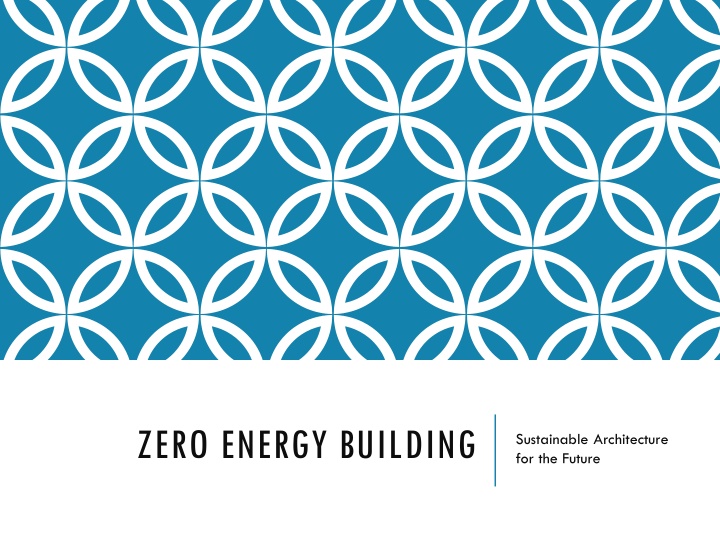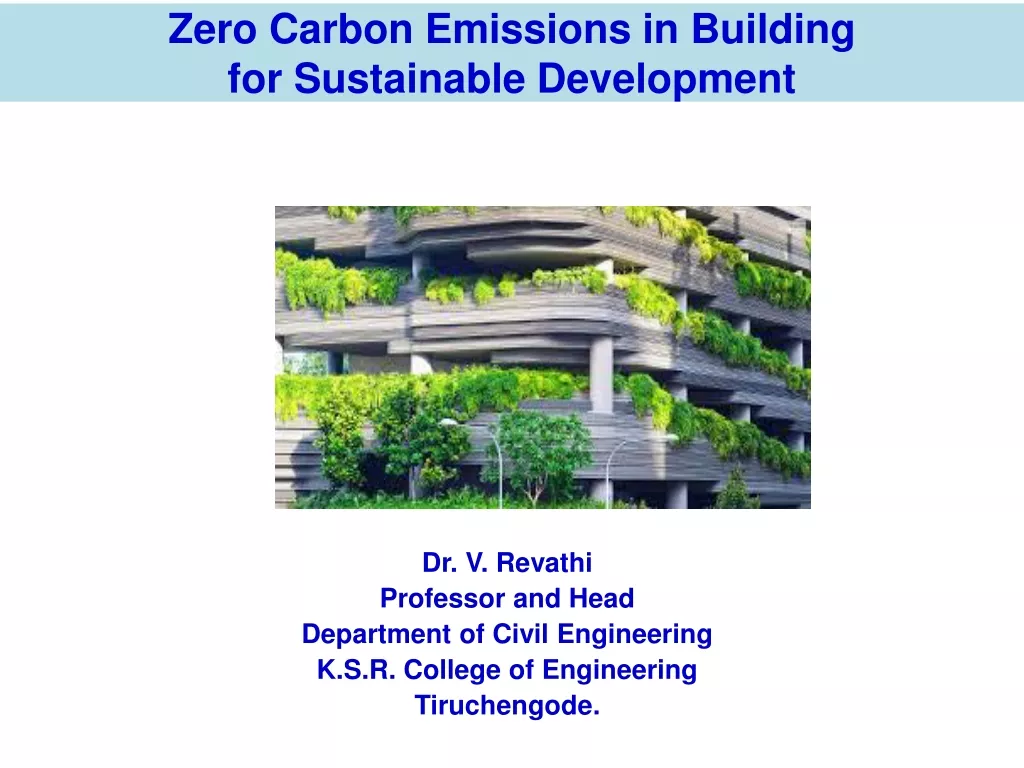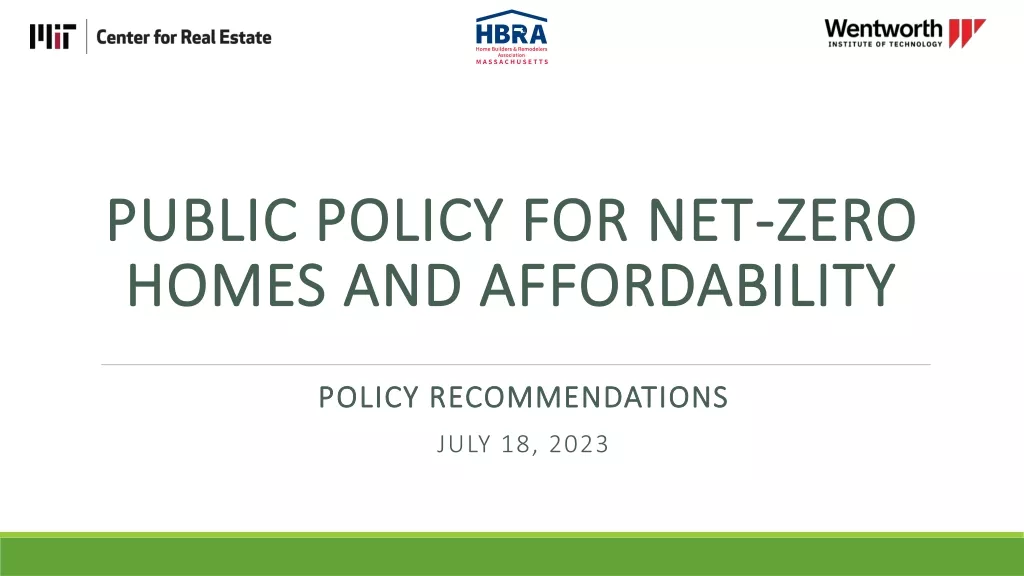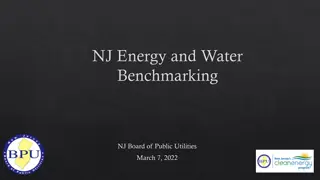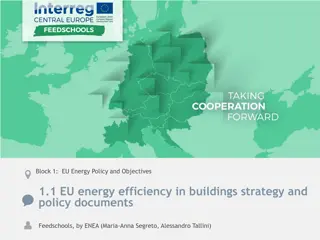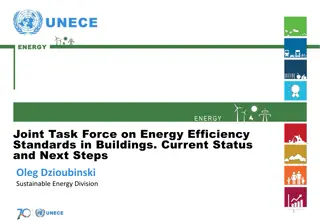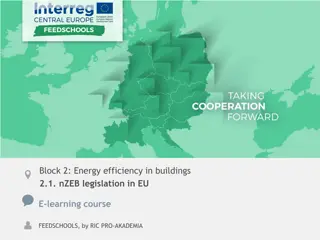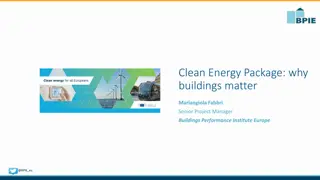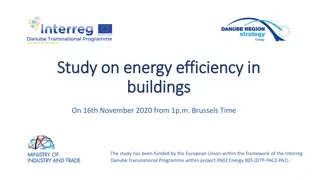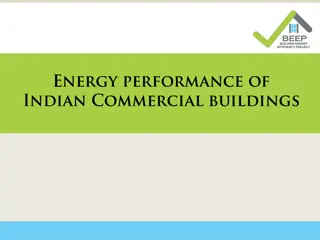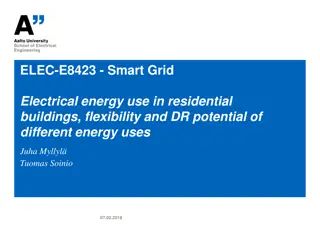Sustainable Architecture for the Future - Zero Energy Buildings
Zero Energy Buildings (ZEBs) are at the forefront of energy-efficient construction, striving for net-zero energy consumption annually. These buildings integrate advanced technologies, superior insulation, and renewable energy systems to reduce environmental impact and provide comfortable living spaces. ZEBs play a vital role in addressing climate change, energy scarcity, and environmental degradation by significantly lowering energy consumption and greenhouse gas emissions. With features like high-performance insulation, renewable energy generation, smart energy management systems, and water efficiency strategies, Zero Energy Buildings demonstrate a holistic approach to sustainable living.
Download Presentation

Please find below an Image/Link to download the presentation.
The content on the website is provided AS IS for your information and personal use only. It may not be sold, licensed, or shared on other websites without obtaining consent from the author.If you encounter any issues during the download, it is possible that the publisher has removed the file from their server.
You are allowed to download the files provided on this website for personal or commercial use, subject to the condition that they are used lawfully. All files are the property of their respective owners.
The content on the website is provided AS IS for your information and personal use only. It may not be sold, licensed, or shared on other websites without obtaining consent from the author.
E N D
Presentation Transcript
ZERO ENERGY BUILDING Sustainable Architecture for the Future
INTRODUCTION TO ZERO ENERGY BUILDINGS Zero Energy Buildings (ZEBs) represent the pinnacle of energy-efficient construction, aiming for a net-zero energy consumption annually. This is achieved through the integration of advanced building technologies, superior insulation, and renewable energy systems. ZEBs are not just about energy efficiency; they embody a holistic approach towards sustainable living, emphasizing the importance of reducing environmental impact while providing comfortable living spaces.
IMPORTANCE OF ZERO ENERGY BUILDINGS Zero Energy Buildings are vital in our transition towards a more sustainable and environmentally friendly future. They address crucial issues such as climate change, energy scarcity, and environmental degradation by drastically reducing energy consumption and greenhouse gas emissions. Furthermore, ZEBs demonstrate the feasibility of living and working in spaces that are not only energy neutral but also potentially energy positive, paving the way for a regenerative approach to building and living.
KEY FEATURES OF ZERO ENERGY BUILDINGS - High-performance insulation and windows create a tightly sealed thermal envelope, reducing heat loss and gain. - Energy-efficient HVAC systems utilize ground-source heat pumps, solar heating, and other renewable technologies for optimal indoor climate control. - Photovoltaic solar panels and wind turbines generate renewable energy, offsetting the building's energy consumption. - Smart energy management systems employ sensors and IoT technology to optimize energy usage and monitor building performance in real-time. - Rainwater harvesting and greywater recycling systems contribute to water efficiency, further reducing the building's environmental footprint.
EXAMPLES OF ZERO ENERGY BUILDINGS Notable examples of Zero Energy Buildings include: - The Bullitt Center in Seattle, USA, dubbed the 'greenest commercial building in the world, generates its own energy through an extensive solar panel array. - The Edge in Amsterdam, Netherlands, features a highly intelligent building management system and an energy-efficient design, setting the standard for future office spaces. - The National Renewable Energy Laboratory's Research Support Facility in Colorado, USA, is a leading example of sustainable design and operation, employing passive solar design and efficient energy management systems.
CHALLENGES AND SOLUTIONS Adopting Zero Energy Building practices faces several challenges, including high upfront costs due to advanced technologies and materials, regulatory and market barriers, and a lack of awareness and education about ZEB benefits and technologies. Solutions to overcome these challenges include government incentives and rebates, advancements in affordable green technology, comprehensive educational programs to raise awareness, and integrating ZEB concepts into building codes and standards to encourage wider adoption.
CONCLUSION Zero Energy Buildings are at the forefront of sustainable architectural design, offering a viable solution to many of the environmental challenges facing the world today. As technology advances and societal awareness increases, ZEBs will play an increasingly critical role in achieving global sustainability goals. Embracing zero energy principles not only benefits the planet but also creates healthier, more resilient communities. The journey towards a zero-energy future is a collective endeavor, requiring the commitment of governments, businesses, and individuals alike.
